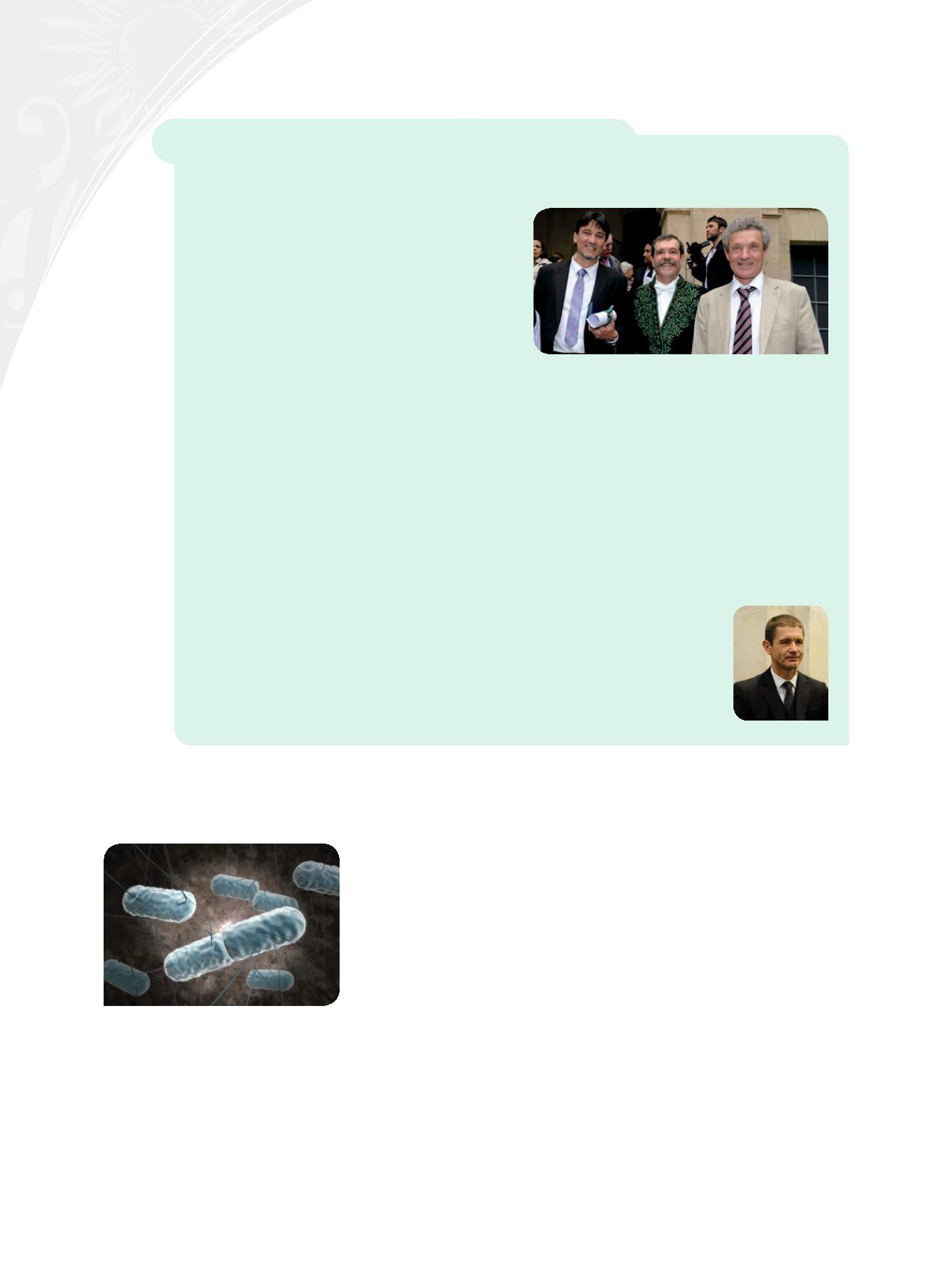

tRAnSmittinG KnOWLeDGe
lectures by the laureates of the Grands Prix 2012 [2012 Great Prizes]
Philippe Bouyer, the laureate of the Fondation Louis D. Award: Creating and Handling Waves of Ultracold Matter
At temperatures in the order of a few nanokelvins, atoms
do not behave any more like material particles but as waves
whose propagation may lead to interference phenomena.
Philippe Bouyer shows how one may observe interferences
that reproduce the phenomena that occur, in particular, in
semiconductors. the very same interferences may also be
used to build highly accurate measuring devices and use
them as guides, study the underground or test the great law of
physics (12 march 2013).
Christophe Salomon, the laureate of the Fondation Louis D. Award: From Ultracold Fermi Gases to Neutron Stars
Ultracold atoms offer the possibility to tune the amplitude and polarity of the force of interactions between atoms. they
thus give us access to a strong correlation regime, very difficult to describe theoretically, in particular with regards to
fermions. christophe Salomon describes some recent experiments on the thermodynamics of highly correlated fermion
gases. Superfluidity takes place at a temperature which, compared to Fermi energy, is remarkably high and is not without
similarities to the superconductor solid systems that reach high critical temperatures. Although there are several tens of
orders of magnitude from the parameters of cold gases to those of neutron stars, the laboratory-measured thermodynamic
quantities make it possible to deduce the equation of state of the outer layer of neutron stars (12 march 2013).
Olivier Pourquié, Lounsbery Prize: The Musculo-Skeletal Axis and the Segmentation Clock
the vertebrae and skeletal muscles originate from somites, transient structures that are produced by pair,
rhythmically, in the course of development. Olivier Pourquié looked back at his discovery: the segmentation
clock, a molecular oscillator involved in the wave-like expression of cyclic genes, before the formation of
each pair of somites. Such work helped the formation (and malformation) of the vertebral column to be
better understood and suggests that protocols may be developed allowing for the in vitro differentiation of
human muscular and skeletal tissues, with cell therapy as an objective (15 January 2013).
© Sagittaria - Fotolia
© Brigitte eymann
© Brigitte eymann
Philippe Bouyer, the Member of the Académie Alain Aspect and
Christophe Salomon
Listeria monocytogenes
:
a model system and a reference
The
Listeria monocytogenes
bacteria may lead to serious foodborne infections and
increased risks of meningitis and premature childbirth. In her research, Pascale Cossart,
the 2013 laureate of the prestigious international Balzan Award, has elucidated the
strategies a bacteria implements to invade cells that do not normally act as phagocytes,
multiply there, avoiding the host’s defences, disseminate within the tissues and cross
the intestinal or fœtoplacental barriers (14 January 2014).
From the Bohr-einstein debate to Quantum information: the second Quantum revolution?
The Bohr-Einstein debate, initiated in 1935, has been rekindled by Bell’s discovery, which led to the invention of new ways to treat
and convey information: quantum information. The 2013 laureate of the Balzan Award, Alain Aspect, looked back into the pioneer
experiments, including his own, that have been conducted on the extraordinary nature of quantum intrication, as well as into the
possibility to observe, isolate and control unique microscopic objects, which was absolutely unconceivable for the founding fathers
of quantum physics (14 January 2014).



















